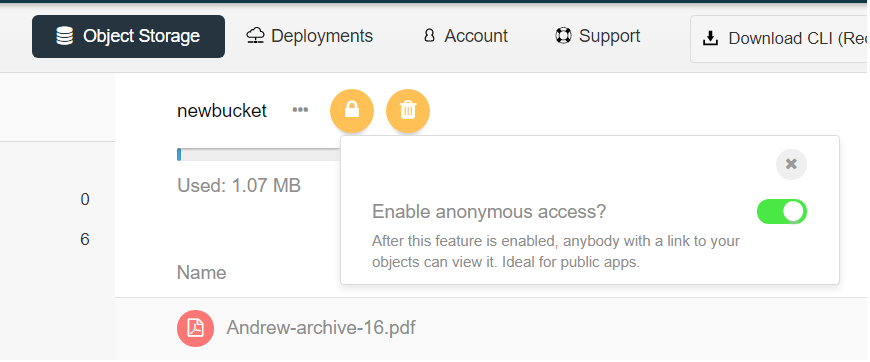
- #Image bucket anonymous upload how to#
- #Image bucket anonymous upload install#
- #Image bucket anonymous upload code#
#Image bucket anonymous upload how to#
The second is with a basic frontend application that demonstrates how to integrate the API. The first is with Postman, which allows you to directly call the API and upload a binary file with the signed URL. I show two ways to test this application. The upload URL is the API endpoint with /uploads appended. Once the deployment is complete, note the APIendpoint output.The API endpoint value is the base URL.

#Image bucket anonymous upload install#
Navigate to the S3 uploader repo and install the prerequisites listed in the README.md.To deploy the S3 uploader example in your AWS account: Directly upload the file from the application to the S3 bucket.

This gets a signed URL from the S3 bucket. Call an Amazon API Gateway endpoint, which invokes the getSignedURL Lambda function.This is two-step process for your application front end: You can then upload directly using the signed URL. When you upload directly to an S3 bucket, you must first request a signed URL from the Amazon S3 service.
#Image bucket anonymous upload code#
You can download the code from this blog post in this GitHub repo. This pattern is used in the Happy Path web application. In this blog post, I walk through how to implement serverless uploads and show the benefits of this approach. S3 also is highly available and durable, making it an ideal persistent store for user uploads. This can significantly reduce network traffic and server CPU usage, and enable your application server to handle other requests during busy periods. If thousands of users attempt to upload media around the same time, this requires you to scale out the application server and ensure that there is sufficient network bandwidth available.īy directly uploading these files to Amazon S3, you can avoid proxying these requests through your application server.

For example, in a web application that specializes in sending holiday greetings, it may experience most traffic only around holidays.

This is challenging for applications with spiky traffic patterns. You must also manage the state of the transfer to ensure that the entire object is successfully uploaded, and manage retries and errors. Media uploads are typically large, so transferring these can represent a large share of network I/O and server CPU time. While the process is simple, it can have significant side-effects on the performance of the web-server in busier applications.


 0 kommentar(er)
0 kommentar(er)
